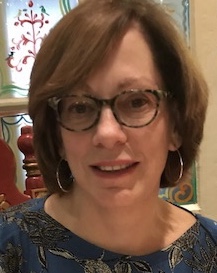My most recent post discussed ways in which medical insurance companies limit doctors’ choices about prescribing disease-modifying drugs (DMDs) for people diagnosed with multiple sclerosis. The post was titled, “I don’t want my insurance company to decide how my doctor can treat MS,” and you can read it here:
https://wordpress.com/post/janenewtonfalany.wordpress.com/2218I don’t want my insurance company to decide how my doctor can treat my MS
As a follow-up, I present myself as an example of why insurance companies shouldn’t limit doctor’s choices when it comes to MS DMDs. People with MS can’t necessarily take all of the disease-modifying drugs (DMDs) on the market — for a number of reasons. In my case, I have had to change DMDs four times because of side effects. I am now on my fifth DMD in the 18 years since my diagnosis.
BETASERON
The first FDA-approved DMD, Betaseron hit the market in 1993. The demand for this injectable drug was so great that a lottery determined who would receive it. Only one in every five MS patients who entered the lottery was able to get it. It was some time after the lottery before Betaseron was available to all those who wanted it.
I began taking Betaseron in 1998, immediately after my diagnosis. Starting an injectable drug for the first time isn’t for sissies, but after I got used to the injections, everything went according to plan for a few years. Then, one day, I turned the color of a school bus, and I was hospitalized for elevated liver enzymes.On the advice of my doctor, I stopped taking Betaseron immediately.
COPAXONE
After six months of recuperation and oral steroids, my liver enzymes returned to normal. My doctor suggested I begin taking Copaxone, another injectable DMD. Again, things went well for a few years, but then Copaxone began causing injection-site reactions, including redness, swelling and pain. After a while, the reactions became too painful, so I stopped taking Copaxone.
TYSABRI
Let’s back up a minute so I can explain about a problem that occurred with Tysabri, the first MS DMD to be administered by infusion instead of injection.
According to WebMD, “After the FDA first approved Tysabri, the drug’s manufacturer took it off the market [in 2004] due to reports of a rare but serious brain infection called PML (progressive multifocal leukoencephalopathy). The drug company introduced a program that requires everyone taking the medicine to register and follow-up in order to find any possible cases of PML as soon as possible. With these safety programs in place, the drug went back on the market [in 2006].”
At about the same time the FDA put Tysabri back on the market, I stopped taking Copaxone. My doctor suggested I start Tysabri, and I did. Then, in accordance with the new safety programs, she tested my blood immediately after my first infusion, and that test revealed antibodies for the John Cunningham (JC) Virus.
According to the Tysabri website, the risk of getting PML is tied to multiple factors, including having antibodies to the JC Virus. The JC Virus is common and harmless in most people—about 50 to 60 percent of the general public has antibodies to the JC Virus in their blood (an indication of infection by the virus)—but it can cause PML in people who have weakened immune systems, such as people taking Tysabri. Because of the antibodies, my doctor took me off Tysabri immediately.
It is important for MS patients to stay on a DMD. When you stop taking one of these drugs and don’t start another one as soon as possible, you increase your risk of an exacerbation and disease progression. But after my experience with Tysabri, I got cold feet about trying other DMDs. I didn’t try another one until seven years later, when the FDA approved Tecfidera, the first oral MS therapy.
TECFIDERA
Tecfidera wasn’t a walk in the park, either. It was a pill, which was great — no more needles! But it came with a couple of side effects that sidelined me. One was flushing. And by flushing, I don’t mean my face turned slightly pink as if I were embarrassed; I mean my red, blotchy skin felt like it was on fire. Not only did it burn, it itched. All day and all night.
I called my doctor’s office and told the nurse about the flushing, and she suggested taking an aspirin a day would help. As soon as I started doing that, the flushing subsided.
The second, longer-term, side effect was nausea–24 hours a day. I hung in there as long as I could, hoping the nausea would subside. The prescribing information indicated it “may” subside within a month. But mine didn’t. So I stopped taking Tecfidera.
AUBAGIO
In the meantime, my MS began to progress; my gait problems and other symptoms began to worsen, so my doctor suggested I try Aubagio, another oral therapy. Unlike other DMDs, Aubagio had been shown to slow the progression of the disease. But when I did the preliminary testing to start the drug, I grew concerned by the need to be tested for tuberculosis. So I chickened out.
During the next year, my gait continued to worsen. Physical therapy didn’t help. I increased the amount of exercise I did, but my gait didn’t get any better. So I decided to try Aubagio.
The drug was known to have a couple of side effects that concerned me. One was nausea and a second was hair loss. I have been fortunate and haven’t experienced either of them.
But I don’t expect to continue to take Aubagio for a long time. My doctor has already identified another drug expected to be approved by the FDA in the next six months that she thinks will benefit me more than Aubagio, and she wants to move me to that drug when it is approved.
THE BOTTOM LINE
After using five DMDs in 18 years, I don’t think insurance companies should be able to remove them from formularies or to change protocols for their use. We need all of the treatment options we can get. The DMDs are all we have to help minimize relapses and limit the progression of this debilitating disease. There is no cure for MS — at least not yet.
The bottom line is I think it’s wrong for insurance companies to make treatment decisions for MS patients. Those decisions should be left to those with more medical expertise — our doctors.

 I am one of at least 400,000 people in the U.S. who have been diagnosed with MS, a debilitating disease of the central nervous system that disrupts the flow of information within the brain and between the brain and the body. This is my story.
I am one of at least 400,000 people in the U.S. who have been diagnosed with MS, a debilitating disease of the central nervous system that disrupts the flow of information within the brain and between the brain and the body. This is my story.














